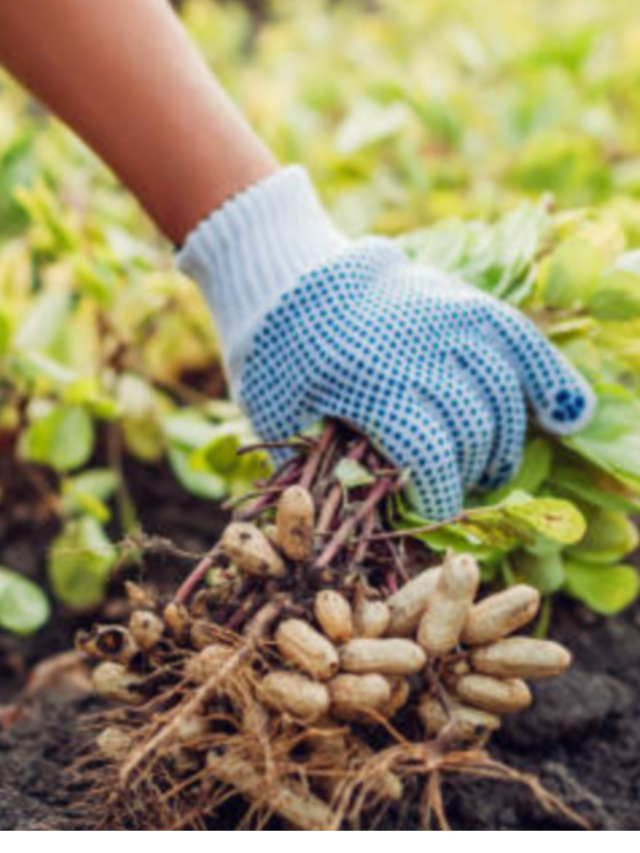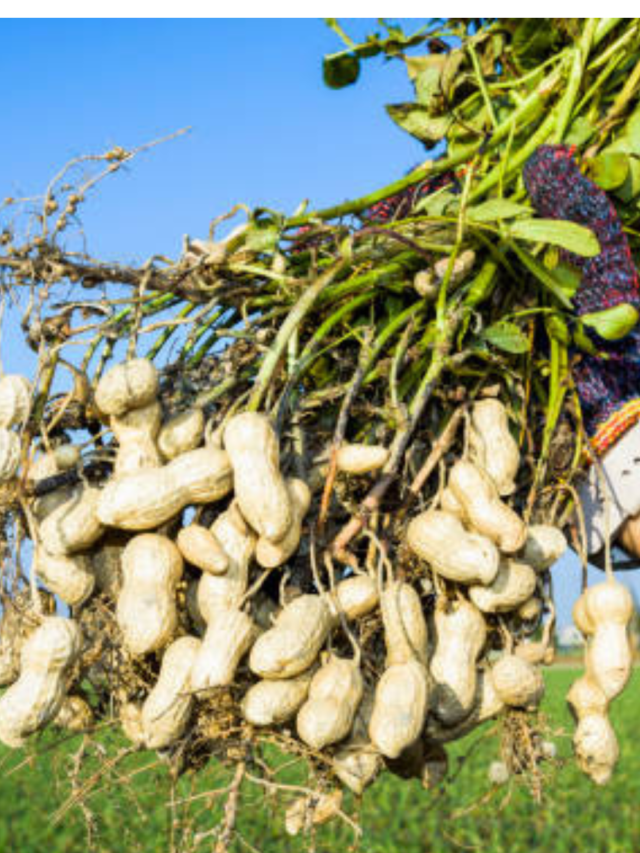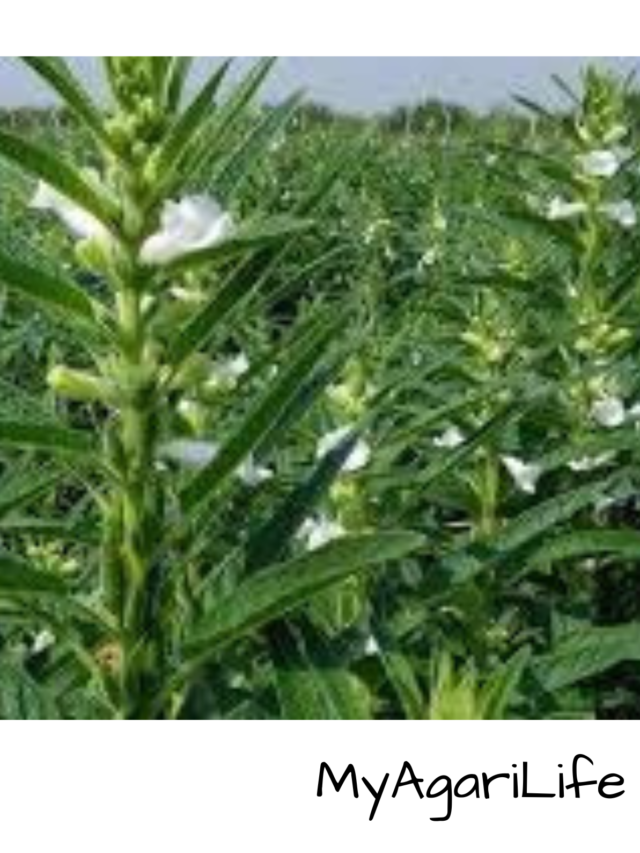Jackfruit is a tropical fruit that is commonly found in Southeast Asia, South Asia, and some parts of Africa. It is the largest tree-borne fruit and can weigh up to 80 pounds.

The jackfruit has a spiky, green, and hard exterior, while the inside is yellow and soft, containing numerous edible bulbs, which are surrounded by a fibrous membrane. The bulbs are the edible part of the fruit and have a sweet, slightly tangy flavor.
Jackfruit is used in a variety of dishes, including curries, desserts, and as a meat substitute in vegan dishes due to its meaty texture when cooked. It is also a good source of nutrients such as vitamin C, potassium, and dietary fiber.
In Indian cuisine, jackfruit is often used to make a popular dish called “kathal ki sabzi,” which is made by cooking the jackfruit bulbs in a spiced tomato-based curry. In some regions, it is also eaten raw when it is ripe and sweet.
Seed Specification Jackfruit
The seeds of a jackfruit are generally oval-shaped, about 2-3 cm long, and 1-1.5 cm wide. They are usually light brown in color with a hard outer shell that is difficult to remove without boiling or roasting.
The seeds contain a white, starchy center that is rich in nutrients such as protein, dietary fiber, and minerals like potassium, calcium, and iron. They can be consumed raw or cooked, depending on the preference of the person consuming them.
When cooked, the seeds have a flavor similar to chestnuts or potatoes and are often used as a substitute in various dishes. In some cultures, jackfruit seeds are roasted, ground into a powder, and used as a coffee substitute.
Overall, jackfruit seeds are highly nutritious and versatile, and can be a valuable addition to a healthy diet.
Land Preparation & Soil Health Jackfruit
Land preparation and soil health are crucial factors for growing healthy jackfruit trees. Here are some key points to keep in mind:
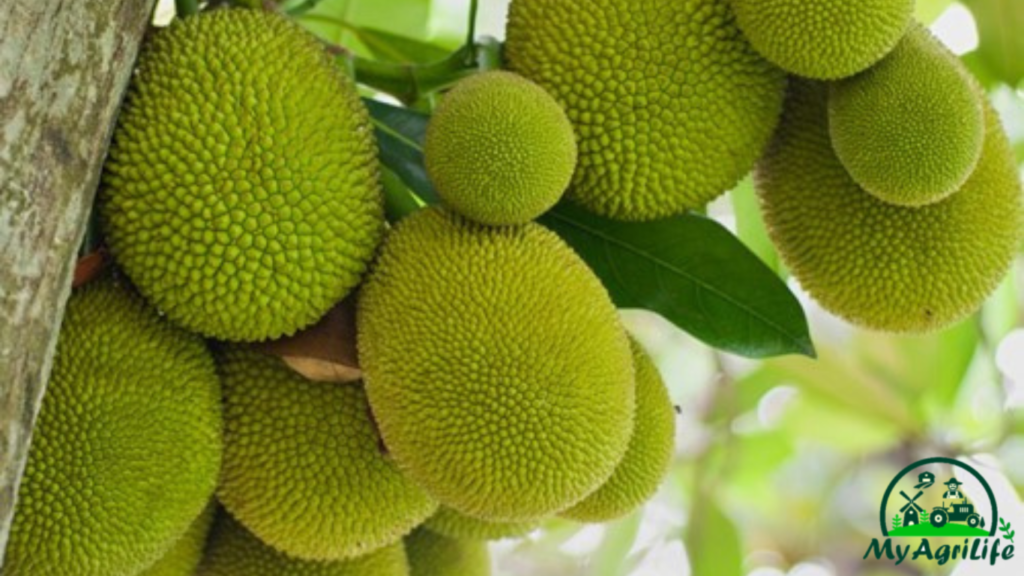
1.Soil type: Jackfruit trees prefer well-drained soil that is rich in organic matter. The ideal soil pH for jackfruit cultivation is between 6.0 and 6.5.
2.Land preparation: The land should be cleared of any weeds or other vegetation, and the soil should be plowed and leveled before planting. It is also recommended to add organic matter, such as compost or manure, to the soil to improve its fertility.
3.Irrigation: Jackfruit trees require regular watering, especially during the dry season. Irrigation should be done evenly to avoid waterlogging, which can cause root rot.
4.Mulching: Mulching can help conserve moisture in the soil, suppress weed growth, and provide nutrients to the trees as the mulch breaks down.
5.Fertilization: Jackfruit trees benefit from regular fertilization with a balanced fertilizer that contains nitrogen, phosphorus, and potassium. It is also recommended to apply foliar fertilizers during the growing season to enhance growth and fruit production.
6.Soil testing: Regular soil testing can help you determine the nutrient content of the soil and identify any deficiencies that need to be addressed.
By paying attention to these factors and maintaining soil health, you can grow healthy and productive jackfruit trees.
Crop Spray & Fertilizer Specification Jackfruit
Crop spray and fertilizer specification are important for the healthy growth and fruit production of jackfruit trees. Here are some key points to keep in mind:
1.Crop spray: Jackfruit trees are susceptible to insect pests and diseases, and regular crop spray can help control these problems. Insecticides and fungicides can be used as necessary, but it is important to follow the instructions carefully and avoid overuse, which can harm the trees and the environment.
2.Fertilizer: Jackfruit trees require regular fertilization to promote healthy growth and fruit production. A balanced fertilizer that contains nitrogen, phosphorus, and potassium is recommended. The fertilizer should be applied evenly around the tree’s drip line, and the amount and frequency of application should be based on soil test results and the tree’s growth stage.
3.Organic matter: Organic matter, such as compost or manure, can also be applied to the soil to improve its fertility and provide nutrients to the trees. Organic matter can be applied in the form of a top dressing or incorporated into the soil during land preparation.
4.Foliar fertilizers: Foliar fertilizers can also be used to enhance growth and fruit production. These fertilizers are applied directly to the leaves of the tree and can provide a quick boost of nutrients.
5.Timing: Fertilizer and crop spray should be applied at the appropriate time to ensure maximum effectiveness. Fertilizer should be applied during the active growth period, and crop spray should be applied as necessary to control pests and diseases.
By following these guidelines and paying close attention to the needs of your jackfruit trees, you can ensure healthy growth and a bountiful harvest.
Weeding & Irrigation Jackfruit
Weeding and irrigation are important practices to maintain healthy jackfruit trees. Here are some key points to keep in mind:
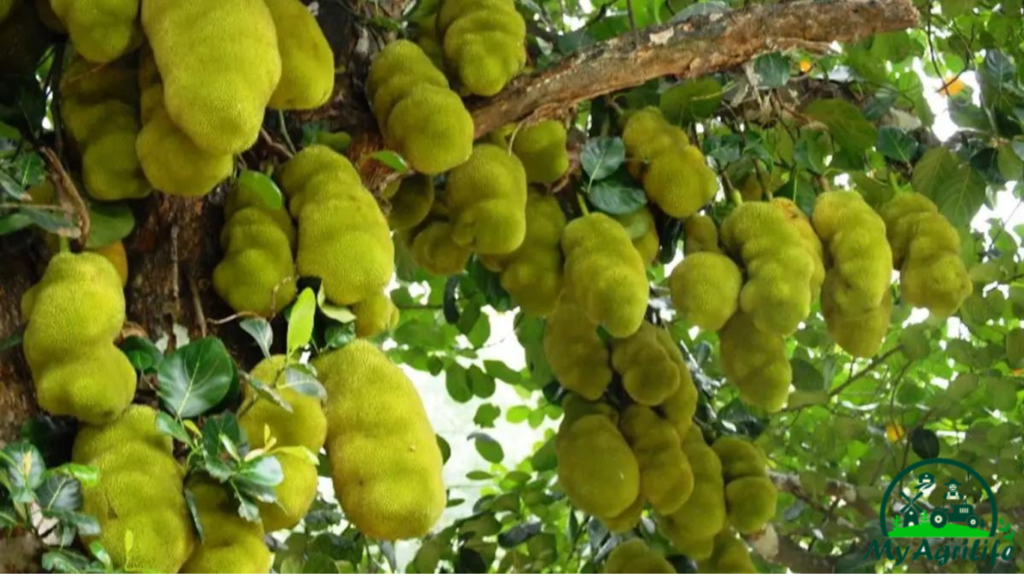
1.Weeding: Jackfruit trees require a weed-free environment to grow well. Weeds compete with the trees for water and nutrients, and can also harbor pests and diseases. Weeds should be removed regularly by hand or with a hoe, taking care not to damage the roots of the jackfruit trees.
2.Mulching: Mulching can help suppress weed growth and conserve moisture in the soil. A layer of organic mulch, such as leaves or straw, can be applied around the base of the trees to provide these benefits.
3.Irrigation: Jackfruit trees require regular watering, especially during the dry season. The amount and frequency of irrigation depend on the soil type, climate, and tree age. The soil should be kept moist but not waterlogged, as waterlogging can lead to root rot. Drip irrigation is a good option for jackfruit trees, as it provides even water distribution and reduces water wastage.
4.Water quality: The quality of water used for irrigation is also important for jackfruit trees. Water with high salinity or alkalinity can harm the trees and reduce fruit production. If the water quality is poor, it may be necessary to treat the water or find an alternative source.
5.Timing: Irrigation should be timed to avoid the hottest part of the day, when water evaporation is highest. Early morning or late afternoon are good times to irrigate.
By following these guidelines, you can ensure healthy growth and fruit production in your jackfruit trees.
Harvesting & Storage Jackfruit
Harvesting and proper storage are important steps to ensure the quality and shelf life of jackfruit. Here’s a guide to harvesting and storing jackfruit:
Harvesting
Jackfruit is typically harvested when it reaches maturity and the fruit has fully developed. The maturity stage can be determined by its size, color, and aroma. The skin of the jackfruit should be yellow or brown, and the fruit should give off a strong, sweet fragrance.
Use a sharp knife or pruning shears to cut the jackfruit from the tree, leaving a short stem attached to the fruit.
Be cautious while harvesting as the fruit can be quite heavy, so support the fruit with one hand while cutting it to prevent it from dropping and getting damaged.
Jackfruit has a sticky latex sap, so it’s advisable to wear gloves and apply oil to your hands and cutting tools to prevent the sap from sticking.
Once harvested, handle the fruit with care to avoid bruising or damage.
Storage
1.Ripe jackfruit: Ripe jackfruit should be consumed or stored promptly as it has a relatively short shelf life. Store ripe jackfruit in the refrigerator to extend its freshness for a few days. Wrap the fruit in plastic wrap or place it in an airtight container to minimize moisture loss and prevent the fruit from drying out.
2.Unripe jackfruit: Unripe jackfruit can be stored at room temperature for a few days. Avoid refrigerating unripe jackfruit as it can affect its texture and flavor. If you need to store it for a longer period, you can cut the unripe fruit into smaller pieces, remove the seeds, and freeze them in airtight containers.
It’s important to note that jackfruit is highly perishable, so it’s best to consume it as soon as possible for optimal flavor and quality.
Conclusion
In conclusion, jackfruit farming can be a profitable and rewarding venture for farmers in tropical and subtropical regions. Jackfruit trees require a warm and humid climate, well-drained soil, and regular irrigation and fertilization. Proper land preparation, crop spray, and weed control are also important for healthy tree growth and fruit production.
Jackfruit fruit is a nutritious food with a variety of culinary uses, and the unripe fruit can also be used as a meat substitute for vegetarian dishes. Jackfruit farming can provide economic benefits for farmers and contribute to the development of local economies.
However, like any farming enterprise, jackfruit farming has its challenges, including the risk of pests and diseases, the need for regular maintenance, and the availability of a reliable market. By carefully planning and managing their farms, farmers can minimize these risks and maximize the potential benefits of jackfruit farming.
